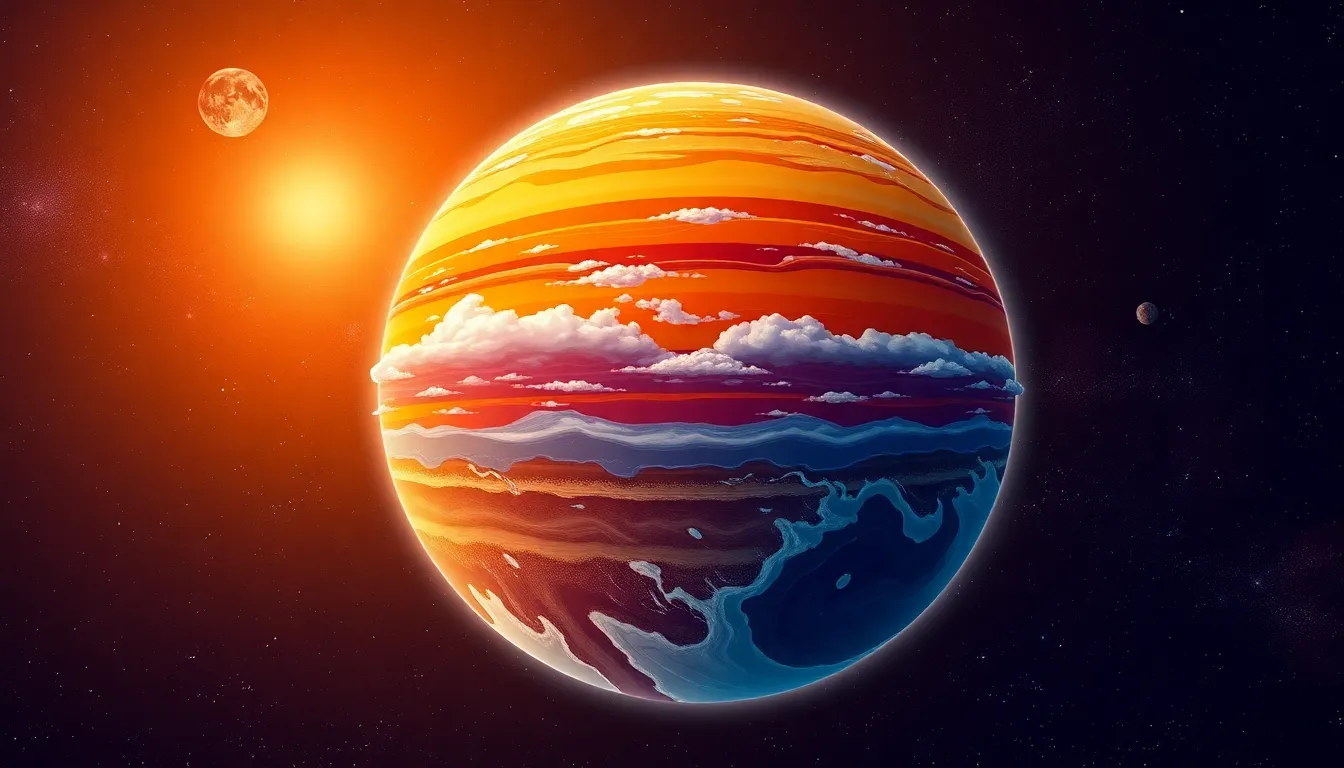In a universe filled with billions of stars and planets, the quest for habitable worlds has become the ultimate cosmic treasure hunt. Imagine sipping a cosmic latte on a distant planet, where the air is breathable and the scenery rivals the best vacation spots on Earth. Sounds dreamy, right? But finding these celestial gems isn’t just about daydreaming; it’s about understanding what makes a planet tick—or spin, rather.
Scientists are on a mission to uncover the secrets of habitable planets, diving into the mysteries of life beyond our blue marble. From the Goldilocks zone to the right atmospheric conditions, the criteria for a planet to support life are as specific as a picky eater’s menu. So buckle up as we explore the fascinating world of potential neighbors in our galaxy, where life might just be waiting to say hello.
Table of Contents
ToggleOverview Of Habitable Planets
Habitable planets exhibit specific characteristics that make them capable of supporting life. These worlds typically exist within a defined range from their host stars, known as the Goldilocks zone. Conditions in this zone allow liquid water to exist, a fundamental requirement for life as we know it.
Atmospheric composition plays a significant role in determining a planet’s habitability. A suitable atmosphere must contain essential gases such as oxygen and carbon dioxide while protecting the surface from harmful radiation. Planetary scientists study atmospheres using advanced telescopes and satellite data, assessing their ability to trap heat and maintain stable conditions.
Kepler-186f, a notable exoplanet discovered in 2014, provides insights into diverse planetary systems. This Earth-sized planet orbits within its star’s habitable zone and experiences ideal conditions for liquid water. Exoplanets like Kepler-186f raise hope for discovering life elsewhere in the universe.
Additionally, scientists consider a planet’s mass and geological activity when assessing its habitability. A planet’s size determines its gravity, which influences atmospheric retention. Geological activity, such as volcanic eruptions, contributes to the recycling of nutrients and plays an essential role in creating a dynamic environment.
Ongoing research continues to reveal new exoplanets that may align with these criteria. Missions like NASA’s Transiting Exoplanet Survey Satellite (TESS) seek out potentially habitable worlds nearby. Each discovery adds layers to understanding what constitutes a habitable planet, opening the door to the possibility of life beyond Earth.
Criteria For Habitability

The criteria for habitability encompass various factors essential for sustaining life. These elements include temperature range, atmospheric composition, and water availability.
Temperature Range
Temperatures on a planet must allow for liquid water to exist. Too cold or too hot conditions prevent this vital substance from sustaining life. Most scientists agree that a temperature range of 32°F to 212°F (0°C to 100°C) promotes habitability. In the Goldilocks zone, a planet orbits within this temperature range of its star. A stable climate also contributes to environmental consistency, further enhancing the chances for life.
Atmospheric Composition
An atmosphere rich in essential gases supports various life forms. Earth’s atmosphere showcases a mix of nitrogen, oxygen, and trace gases that help protect against radiation. Relevant compounds, such as carbon dioxide, are crucial for processes like photosynthesis. A suitable atmospheric pressure also assists in maintaining liquid water on a planet’s surface. Key components should include greenhouse gases that help regulate temperature, creating a balanced environment conducive to life.
Water Availability
Access to liquid water is fundamental for any potential life. Many planets and moons are under observation for signs of water, whether in liquid or ice form. Liquid water serves as a solvent for biochemical reactions, which are vital for living organisms. Finding subsurface oceans or lakes enhances the possibility of life. The presence of water not only supports habitability but also indicates a planet’s geological activity, which may help sustain an atmosphere over time.
Notable Habitable Planets
The exploration of habitable planets reveals intriguing possibilities beyond Earth. Several notable candidates exist within our galaxy, capturing the interest of scientists.
Exoplanets In The Goldilocks Zone
Exoplanets situated in the Goldilocks zone revolve around their stars at distances that allow liquid water to exist. Kepler-186f stands out as a prime example; its location enables temperatures conducive to life. Another remarkable contender, Proxima Centauri b, orbits the nearest star to our solar system and lies in its habitable zone. More discoveries, like TRAPPIST-1e, highlight the diverse environments potentially capable of supporting life. The presence of liquid water on these planets significantly increases their chances for habitability. Research continues to identify additional exoplanets that meet these essential criteria, enhancing our understanding of life’s potential beyond Earth.
Moons That May Support Life
Moons orbiting gas giants also show potential in the search for life. Europa, one of Jupiter’s moons, hides a subsurface ocean beneath its icy crust, providing an ideal environment for life. Titan, Saturn’s largest moon, boasts lakes of liquid methane and ethane, offering a unique chemistry that could support unknown life forms. Enceladus, another of Saturn’s moons, has geysers ejecting water vapor and organic substances into space, indicating a habitable environment beneath its surface. Various other moons are under investigation, enhancing the prospects of finding life outside Earth. Astronomical missions aim to explore these celestial bodies, revealing more about their potential to sustain life.
The Search For Habitable Planets
Scientists actively explore the universe to identify habitable planets. Ongoing missions and advancements in technology play a crucial role in this quest.
Current Missions And Technologies
NASA’s Transiting Exoplanet Survey Satellite (TESS) continues to scout for new exoplanets. TESS identifies potential candidates by monitoring stars for periodic dips in brightness caused by orbiting planets. The James Webb Space Telescope (JWST) enhances observations with its advanced imaging capabilities, allowing for in-depth analysis of planetary atmospheres. European Space Agency (ESA) missions also contribute valuable data, such as the CHEOPS satellite focusing on nearby stars. These technologies streamline the search, making it possible to gather information about distant worlds quickly.
Challenges In The Search
Numerous challenges arise during the search for habitable planets. Limited information often complicates assessments of distant celestial bodies. Detecting exoplanets among bright stars requires sophisticated techniques to discern tiny signals. Atmospheric composition analysis remains a significant hurdle due to the vastness of space and distance from Earth. Some candidates may exist in extreme conditions, making it tough to predict their true potential for life. Despite these challenges, continued advancements keep the search vibrant and promising.
The quest for habitable planets continues to inspire both scientists and dreamers alike. With each new discovery of exoplanets in the Goldilocks zone and the exploration of intriguing moons, the possibility of finding life beyond Earth becomes more tangible. Advancements in technology and ongoing missions are crucial in uncovering the secrets of these distant worlds.
As researchers refine their understanding of habitability criteria, the universe reveals its potential to host life in forms yet to be imagined. The journey to identify our cosmic neighbors is just beginning, fueling curiosity and hope for what lies beyond our own planet.








